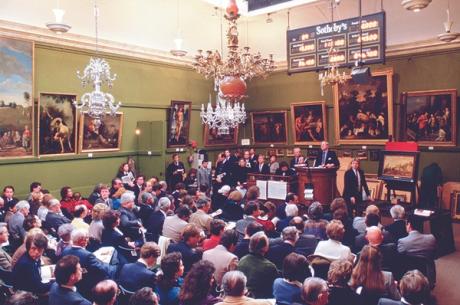
Inflation is expected to decline in the UK and the US this year, although at present it remains stubbornly persistent in both countries. The implications are clear for consumers; for the art market, less. After the sugar spike of the Paul G. Allen sale in November, auctioneers and dealers suddenly became fearful of an impending downturn. As the outcome of these economic fluctuations is still uncertain, it is worth returning to the inflationary period of the 1970s, which effectively launched the art world as we know it today.
US inflation reached 11.05% in 1974, then declined slightly, rising to 11.25% in 1979 and peaking at 13.55% in 1980. Art tends to be a lagging indicator, however, and the market did not react immediately to these jumps. According to the Mei Moses Art Index, art prices were relatively stable from the mid-1950s to the mid-1970s. Thereafter, prices began to rise, at first gradually and then, from about 1987 to 1989, hastily. At a more granular level, a parallel trend can be seen in the prices of Egon Schiele watercolors. In 1972, a high-quality watercolor by the artist sold for $26,000. Six years later, a comparable work was worth $120,000. By 1989, the record had risen to over $400,000.
The inflation of the 1970s inflated the art market, giving the appearance of greater gains than, in real terms, had actually taken place. This, in turn, became a self-fulfilling prophecy, helping to establish art as an asset to be considered (rightly or wrongly) in the same class as stocks or other more traditional investments. It is no coincidence that the art price peak of the 1980s came after the stock market crash of 1987. At that time, auctions, once primarily the responsibility of dealers who had to pay in bulk, s were extended to encompass retail customers. Auction results have come to be seen as barometers of the market, much like stock market indices. Christie’s and Sotheby’s have used their financial might to create a global market for “first class” art. The gallery owners, who once served a largely local clientele, have responded by supporting a circuit of international art fairs.
Also in the 1980s, the economies of the United States and the United Kingdom were fundamentally restructured by the neoliberal policies of Ronald Reagan and Margaret Thatcher: a combination of tax cuts, deregulation and spending cuts in social protection programs. Inflation was brought under control by temporary increases in interest rates, and then averaged between 2% and 3% per year. The prices of most consumer goods remained stable or, impacted by imports from low-wage countries, even fell, in relative terms. However, as more and more wealth returned to the upper echelons of society, the prices of other assets soared: stocks, luxury goods, yachts, high-end real estate and, of course, art. Reagan’s “trickle down economy” never reached the average worker, but the expansion of the art world created a multitude of new jobs for specialized support staff: art consultants, curators, dealers, gallery assistants, registrars, framers, curators, art managers, packers. , shippers, storage facilities, insurance agents, customs brokers, etc. The cumulative impact of systemic inflation and asset inflation has sustained the art market for over 40 years.
Reassess priorities
If the current inflationary spiral continues – and the most recent forecasts suggest that it will not – art prices could eventually stabilize at higher levels, as happened in the 1980s. At the moment, however, many collectors, spooked by recent economic and political uncertainties, are buying cheaper works or not buying at all. The longer this trend continues, the more likely it is to topple the heaviest structure of the art market, which is supported by a small group of super-rich collectors, as well as auction houses and mega- merchants who serve them. At the same time, the concurrent association of the “blue chip” canon with socio-economic inequality is increasingly being challenged by efforts to craft a more inclusive cultural narrative. The end result can be a total overhaul of relative artistic values.
